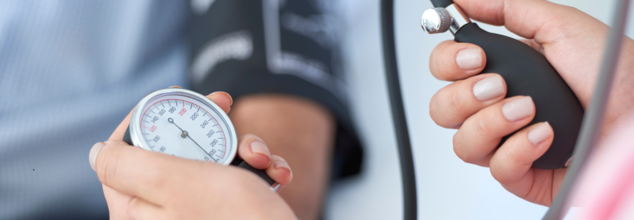- Health Conditions A-Z
- Health & Wellness
- Nutrition
- Fitness
- Health News
- Ayurveda
- Videos
- Medicine A-Z
- Parenting
- Web Stories
Smartphone Data Can Predict Recovery After Leg or Hip Fracture

(Credit-Canva)
At this stage of technological advancement, most people carry their smartphones around with them all the time. Many of us use it for our daily needs like phone calls, placing orders and keeping track of our activity levels. However, what you may not have known, is that this daily activity tracking could be the key to proper recovery if you ever run into an accident.
A new study has found that the information your smartphone collects about your daily movement can tell doctors a lot about how quickly and well you'll get back on your feet after breaking a leg or a hip. It's like your phone holds clues to your body's natural ability to heal and get moving again, even before the injury happens. This could be a really helpful tool for doctors and patients.
Pre-Injury Mobility Could Be Key To Recovery Success
The study's findings, published in the Journal of Bone & Joint Surgery, researchers discovered that the data from smartphones, like how many steps a person took each day, how fast they walked, how long their steps were, and their walking style (gait), all give a clear picture of how well they are likely to recover after their bone break. It turns out that your body's usual way of moving before the injury is a strong indicator of how your recovery will go and how well you'll regain your physical abilities later on.
How It Revolutionizes Orthopedic Care with Personalized Insights
Researchers believe that using smartphone data in this way has the potential to really change how doctors provide care for broken bones. It can help doctors give patients a better idea of what to expect during recovery, spot any problems earlier, and create recovery plans that are specifically tailored to each person based on their own movement history. This means a more personalized and effective healing process.
How Did The Study Find This?
To do this study, the researchers asked 107 adults who had already had surgery for a broken hip or leg at least six months earlier to share the data collected by their Apple iPhones. This information included things like their daily step count, their usual walking speed, how long their steps were, and the way they typically walked. By looking at this past movement data, the researchers could see patterns related to their recovery.
The study's results clearly showed that there's a strong link between a person's activity levels before they broke their leg or hip and how active they were during their recovery. For example, people who regularly took more steps each day before their injury also tended to take more steps as they were healing and getting back to their normal routines. This shows how important baseline fitness is for your body in general as well as in case of recovery.
Doctors Can Now Use Phone Data for Treatment
The study concluded that one’s doctors and physicians could use this information about how people moved before their injury, gathered from their smartphones, to create much more precise plans for surgery, give better advice about recovery, and set more realistic goals for physical therapy. This way, the treatment and recovery process can be designed specifically for each individual, potentially leading to better and faster healing and a return to normal activities.
Long COVID 'Brain Fog' Linked To Inflammation, Stress Markers: Study

Credit: Canva
A recent study has provided the first concrete evidence linking the debilitating "brain fog" experienced by millions of long COVID patients to changes in the brain, including inflammation and a compromised ability to rewire itself after infection.
The small-scale study, conducted by researchers at Corewell Health in Grand Rapids, Michigan, and Michigan State University, found that alterations in two key brain chemicals could be driving these cognitive issues, according to United Press International. The research is particularly significant as it offers scientific validation for the approximately 12 million long COVID patients in the United States who have reported neurological symptoms without prior medical proof.
Researchers examined biomarkers in 17 COVID-19 patients, including 10 who still experienced symptoms six months after contracting the virus. Participants who reported brain fog exhibited elevated levels of an anti-inflammatory protein critical to regulating the immune system and lower levels of nerve growth factor (NGF), a protein essential for the brain’s plasticity.
Brain plasticity refers to the organ’s ability to adapt, reorganize, and heal itself following illness or injury. The National Library of Medicine explains that this process involves the brain adjusting its structure, functions, or connections to accommodate changes brought on by conditions like long COVID.
One of the study's co-authors, Dr. Bengt Arnetz, emphasized the importance of the findings. “We found biological changes, which I think is a very big strength for this study,” he said. He added that the suppression of NGF in long COVID patients is consistent with findings from neuro-cognitive tests.
During the study, participants underwent various psychological assessments, with most tests showing unremarkable results except for the "letter fluency" test, which measures executive functioning under time constraints. Clinical neuropsychologist Michael Lawrence, another co-author, explained that the test involves generating words starting with a specific letter or naming items within a category, such as fruits or animals. Participants with long COVID struggled more with this task, suggesting impairments in executive function, memory, and language.
Lawrence noted that the results provide objective findings that align with the symptoms long COVID patients have been reporting. “Now we have some objective findings that really confirm what patients are describing and feeling,” he said.
Identifying these biomarkers could aid in developing targeted, multidisciplinary treatments for long COVID symptoms, Lawrence added. He emphasized the need for a holistic approach to treatment, noting that addressing mental health symptoms can also alleviate physical symptoms like pain and fatigue. "We really need to treat the whole person, but we need to treat it early," he said.
World Hypertension Day: Salt, Stress And Screens: The New Triggers Of High Blood Pressure

Hypertension has long been a quiet predator, usually symptom-free until it causes severe damage to health. Popularly referred to as the "silent killer," high blood pressure is no longer limited to genetic history, poor eating habits, or couch potatoes. With today's hyper-connected, high-pressure lifestyle, new culprits have joined the scene: excessive salt, chronic stress, and screens. The modern-day triggers are quietly but emphatically raising blood pressure in individuals of all ages—even young adults.
This segment discusses how these apparently disparate lifestyle variables overlap, lead to hypertension, and what world health officials are saying about addressing this plague as a whole. Historically, hypertension was associated with age, weight, or inactivity but by experts' accounts the scene has dramatically altered, let's see.
Modern Triggers Of Hypertension
“With changing lifestyles, we’re witnessing hypertension driven by urban stressors- excessive salt intake, ongoing psychological stress, and extensive screen exposure. These risk factors are no longer isolated but compounding and overlapping, especially in city dwellers,” says Dr. Anjan Siotia, Director, Cardiology, BM Birla Heart Hospital Kolkata,
What's worrying is that these triggers tend to be ignored or accepted as part of contemporary living. But the harm they cause is not so subtle either. Chronic high blood pressure raises the risk of heart attacks, strokes, kidney damage, and even dementia.
Salt
Salt is a vital nutrient that supports muscle contraction, fluid balance, and blood pressure. But excessive amounts? Trouble starts there. Clinical Dietitian and Reenurture Founder Reena Poptani describes how the average adult's salt consumption exceeds guidelines.
"WHO advises less than 2000mg per day (about 5g of salt), while the American Heart Association advises that it should be restricted to 1500mg for those at risk. But all of us unknowingly take two to three times the amount—mainly in the form of packaged foods and processed foods," she informs.
Sneaky sodium is hiding in popular favorites such as chips, instant noodles, ketchup, bread, mayonnaise, pickles, and frozen foods. Monosodium glutamate (MSG), sodium nitrate, and sodium benzoate are also high-sodium preservatives to add shelf life but damage heart health.
"It's not merely the salt you can see sprinkled over food," says Reena. "The true danger is in the salt that isn't visible. Cutting back this invisible sodium is a huge leap toward lowering blood pressure levels."
She recommends simple measures such as eschewing table salt, adding flavor with spices and lemon, opting for fresh fruits and vegetables rather than frozen or packaged ones, and reading labels carefully. Even modest decreases in sodium consumption can result in significant declines in blood pressure.
Stress
Stress was once thought to be episodic—a reaction to unexpected difficulties. Now, it's chronic, relentless, and intertwined in the texture of everyday living. Money concerns, job overload, social comparisons, and individual uncertainty all feed into this persistent mental tension.
Raee Sharma, Associate Clinical Psychologist, Lissun, describes the psychological school of thought:
"When the body is under extended stress, the body is stuck in fight-or-flight mode. This results in stress hormones such as cortisol and adrenaline remaining high, raising heart rate and causing blood vessels to constrict, eventually resulting in ongoing hypertension."
But stress does not work all on its own. It also fuels negative coping habits: eating junk food, smoking, drinking alcohol, inadequate sleep, and withdrawal from social interactions. These all degrade blood pressure, so stress is a multi-pronged foe.
Raee mentions an alarming trend among her clients, "Many are unaware of how their unresolved emotional issues—burnout, anxiety, even emotional suppression—are translating into physical symptoms like fatigue, irritability, and high blood pressure. We must address these mental stressors head-on.
Her tip? Cultivate emotional awareness. Know how to spot signs of overwhelm in the bud. Practice therapeutic techniques—be it mindfulness, talk therapy, journaling, or relaxation training. Building psychological safety nets can preclude physical breakdown.
Screens
Our screens are a lifeline these days, linking us to work, social life, and entertainment. But too much comes at a heavy cost. Too much screen time is now being linked to hypertension, especially among children and young adults. Here's what Dr. Siotia says:
“More screen time equates to less physical movement, which contributes to weight gain and poor cardiovascular health. Add to that the overstimulation and sleep disruption from devices, and we’re looking at a perfect storm for elevated blood pressure.”
Raee Sharma echoes this concern, emphasizing three major risks of screen overuse:
Physical Inactivity: Hours in front of screens replace time that could be spent moving or exercising.
Sleep Disturbance: Blue light reduces melatonin levels, making it more difficult to sleep and remain asleep.
Cognitive Fatigue: Ongoing exposure to bad news, social media, and electronic noise continues to overstimulate the brain, raising stress levels.
"Most people don't even know they're so emotionally drained from their digital existence. It keeps their nervous system in high gear, quietly elevating their blood pressure every day," Sharma states.
There must be boundaries set in the digital world. Balance is suggested by Raee through screen-free evening time, offline pursuits, nature strolls, and intentional limits on doomscrolling.
Holistic Blueprint to Beat Hypertension
2025 means more than prescription medication or annual checkups to treat hypertension. What's needed is a lifestyle reboot—involving nutritional well-being, emotional wellbeing, and thoughtful use of technology.
A multi-faceted action plan is drawn up by Dr. Siotia
- Check blood pressure on a regular basis, particularly if you have a family history or have a stressful lifestyle.
- Engage in 30 minutes of exercise every day, whether it is walking, cycling, or yoga.
- Avoid tobacco and excessive alcohol consumption, both of which increase blood pressure.
- Take sufficient sleep, preferably 7–8 hours, so that the body can rest.
- Practice mindfulness or meditation to handle chronic stress.
Reena Poptani adds, “Reducing salt gradually—not drastically—helps retrain the palate and makes healthy eating sustainable.”
Raee Sharma encourages emotional check-ins, “If you’ve been feeling ‘off’—irritable, anxious, or constantly fatigued—don’t ignore it. Psychological stress often shows up in the body long before the mind registers it.”
Salt, stress, and screens appear to be isolated strands, but they are deeply entangled in the tapestry of contemporary existence. And as our ways of living increasingly move toward convenience, haste, and dependency on devices, the influence on our blood pressure becomes increasingly inescapable.
In order to actually treat hypertension today, we need to advance our comprehension. It's not merely a matter of physical health—it's emotional, it's behavioral, it's environmental.
Let's not wait for a diagnosis to begin making choices. Whether it's trading your salty snack for a fruit bowl, writing in your journal rather than scrolling, or just taking a deep breath after a stressful meeting—each mindful decision contributes because in the battle with the silent killer, awareness, intention, and action are our best allies.
World Hypertension Day: The Toll of Anxiety and Social Media That Is Making More Young People Face High Blood Pressure

Credits: Canva
Hypertension, or high blood pressure, is a condition where the force of blood against artery walls is consistently too high. According to the Centers for Disease Control and Prevention (CDC), it's often called the “silent killer” because it typically has no warning signs but can lead to serious heart disease, stroke, and kidney failure over time. The World Health Organization (WHO) defines it as a major global health issue, with over 1.28 billion adults aged 30–79 estimated to have hypertension, most of them unaware of their condition.
Hypertension & the Young: A Growing Concern
While traditionally seen as an older person’s problem, hypertension is now being diagnosed in younger individuals—often silently progressing due to unmanaged mental health issues. According to Ms. Aanchal Choudhary Ahuja, Clinical Psychologist (RCI Recognised), Lissun, one of the major drivers behind this shift is the unique emotional and digital stress young adults face today.
“Social media is tricky,” says Ms. Ahuja. “On one hand, it connects us. On the other, it constantly bombards us with things to compare ourselves to—perfect bodies, perfect lives, perfect careers. That kind of pressure builds quietly.”
The Link Between Hypertension and Mental Health
Hypertension and depression are closely interconnected. Biologically, chronic stress and depression activate the hypothalamic-pituitary-adrenal (HPA) axis, which raises cortisol levels—a stress hormone that, when elevated for long periods, can cause high blood pressure. Psychologically, depression can lead to a lack of self-care, poor diet, and disrupted sleep—all of which are risk factors for hypertension.
“I’ve seen patients come in with symptoms of anxiety and low mood, only to find out they’re also dealing with elevated blood pressure,” Ms. Ahuja explains. “It becomes a vicious cycle, where one condition fuels the other.”
Social Media and the Stress Spiral
Constant scrolling, especially late at night, leads to poor sleep and a sense of falling behind. “You open LinkedIn and suddenly feel like you're not doing enough,” says Ms. Ahuja. “It’s a subtle, constant comparison we don’t even realize we’re making.” Over time, this quiet stress impacts both mental health and cardiovascular health.
One of her clients, a 24-year-old tech employee, came in for therapy due to insomnia and anxiety. She was later found to have early-stage hypertension. “Her daily stress included back-to-back meetings, no breaks, and social media-induced sleep deprivation,” Ahuja recalls.
Signs You Shouldn't Ignore
In young adults, the early symptoms of co-existing hypertension and mental health strain can be subtle. These may include:
- Persistent fatigue
- Difficulty concentrating or brain fog
- Headaches or chest tightness
- Mood swings or emotional numbness
- Loss of interest in hobbies and relationships
“These are the body’s early warning signs,” Ms. Ahuja stresses. “Often, they’re easy to dismiss, but they’re the mind and heart asking for help.”
Long-Term Effects of Digital Overload
Poor sleep, endless comparison, and doom-scrolling quietly alter your baseline stress levels. “These habits, over months or years, change your body. You may feel 'used to it,' but your heart isn’t,” says Ahuja. Chronic stress can eventually lead to hypertension, digestive issues, weakened immunity, and emotional burnout.
Preventive Steps: From Screen Breaks to Therapy
According to Ms. Ahuja, prevention starts with awareness. “Mental health check-ins should be routine, just like blood tests. Even if nothing feels ‘wrong’, it helps catch the buildup of stress early.” She also advocates for regular digital detoxes. “Our brains weren’t designed for constant content. Taking breaks—even just keeping your phone away during meals—can reduce cortisol levels and help reset your nervous system.”
Her Advice to the Overwhelmed
“Don’t wait until it gets bad,” she says. “Waiting for a breakdown to act is like waiting for your car engine to explode before checking the oil.” Her practical suggestions:
- Limit screen time, especially before bed
- Build boundaries between work and rest
- Talk to someone—friend, mentor, or therapist
- Don’t dismiss your feelings just because they don’t seem ‘serious enough’
© 2024 Bennett, Coleman & Company Limited

